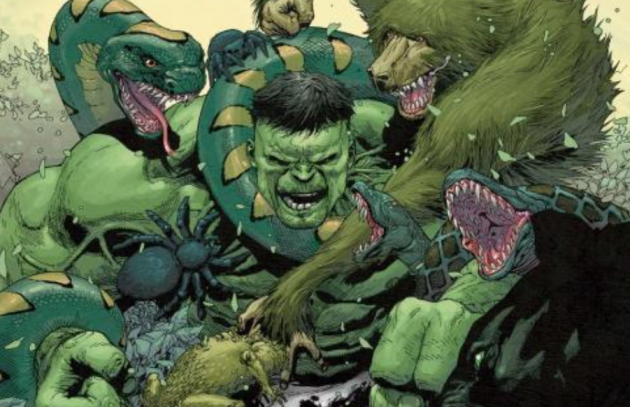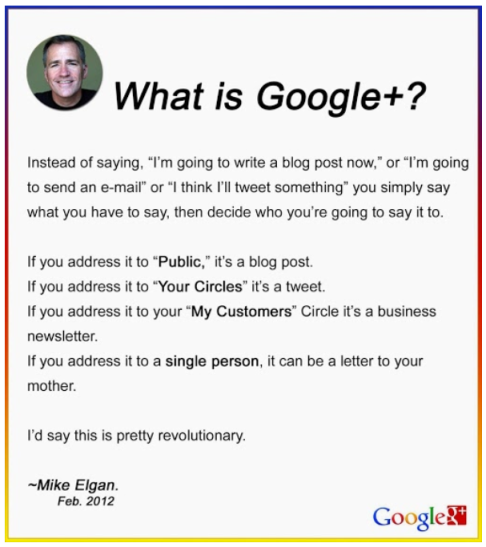— Sylvie von Duuglas- (@_ittu) July 6, 2013
I really don’t want to write this in a high-minded way, with references to Friedrich Nietzsche and the film making of Tarkovsky, but I’m afraid that is the way it is going to come out. What I really want to write about is how Instagram (nearly) ruined Twitter’s new “video app” Vine for me. But also I want to brush up against just what it is that Vine is, to think about it in a much larger context than the Facebook vs. Twitter platform user war that conditions most of the conversation. I want to think about what Vine could be, what it was that Twitter stumbled into, and maybe get a view toward a future for Vine that probably will never be.
Why Vine is not Video
Look at the Vine at the top of the page and I think right away you’ll grasp why Vine is not video…if this were a video (a still image with an arrow that you clicked on to to play, or worse, a video that started playing automatically), this would be a very bad video. In fact I’m not even sure that it is a very good Vine. But what it is is something different. It is an aesthetically new class of thing, because of its edits, its compression, but mostly because of its closure upon itself. Our e-eyes have been conditioned to be able to read these kinds of images easily due to the endless gifs that have populated forums, websites and social platforms for years, but this isn’t even really a gif, I’d argue, largely because it is shot as an mise-en-scene expression, a communication. Vines force a kind of dense rendering of a 6 second moment, short edit decisions (that can be exhilarating), a grasping of a scene in a kind of purity…because it is fated to loop endlessly ad infinitum. Of course Vinists don’t have to use them that way, but the form of the Vine invites it.
This is where we get the Nietzsche reference. Nietzsche had an idea he liked to think about called the Eternal Return, the notion that each and every moment of one’s life – given the infinity of Time – is bound to be repeated again…and again, and again, and again. He drew a kind of moral lesson from this, that one had to live one’s life with the bold affirmation that each of your life’s moments, even your weakest ones, were WORTH being lived eternally…
What, if some day or night a demon were to steal after you into your loneliest loneliness and say to you: ‘This life as you now live it and have lived it, you will have to live once more and innumerable times more’ … Would you not throw yourself down and gnash your teeth and curse the demon who spoke thus? Or have you once experienced a tremendous moment when you would have answered him: ‘You are a god and never have I heard anything more divine.’ [The Gay Science, §341]
This, at least for me, is what is so beautiful about Vine. It asks you to select 6 seconds that will be replayed like a prayer wheel in a kind of aesthetic eternity. Just as a photography magically seemed to capture the soul of a person, a moment…in a layer of frozen silver, Vines cup together seconds and circles them, creating an odd sort of energy that seems remarkably consonant with Twitter’s very abbreviated blogging itself. Twitter found something. If you make and experiment with Vines I think you’ll see it. In Vine you are clustering together motion, moments, compression and release, a constellation, and if you are doing it with Vine in mind you are doing with an eye towards eternity, how they fold back on themselves. You are not creating a linear exposition.
Edits in Vine
I mentioned it in passing, but there is also something going on in edit choices in Vine, the (also) compressed way in which edit choices have to be made with the live and lived subject right there with you. You have to feel its “time”, and dialogue with it in a way. What does that mean? This is where Tarkovsky, one of my favorite film directors comes in. I’m pasting this from their Sculpting in Time source, so I lowered the font color to ease the eye on the caps:
EDITING BRINGS TOGETHER THE SHOTS THAT ARE ALREADY FILLED WITH TIME. ALTHOUGH THE ASSEMBLY OF THE SHOTS IS RESPONSIBLE FOR THE STRUCTURE OF A FILM, IT DOES NOT, AS IS GENERALLY ASSUMED, CREATE ITS RHYTHM. THE DISTINCTIVE TIME RUNNING THROUGH THE SHOTS MAKES THE RHYTHM OF THE PICTURE; & RHYTHM IS DETERMINED NOT BY THE LENGTH OF THE EDITED PIECES, BUT BY THE PRESSURE OF THE TIME THAT RUNS THROUGH THEM. EDITING CANNOT DETERMINE RHYTHM (IN THIS RESPECT IT CAN ONLY BE FEATURE OF STYLE); INDEED, TIME COURSES THROUGH THE PICTURE DESPITE EDITING, RATHER THAN BECAUSE OF IT. THE COURSE OF TIME, RECORDED IN THE FRAME, IS WHAT THE DIRECTOR HAS TO CATCH IN THE PIECES LAID OUT ON THE EDITING TABLE
TIME, IMPRINTED IN THE FRAME, DICTATES THE PARTICULAR EDITING PRINCIPLE; & THE PIECES THAT ‘WONT EDIT’ – THAT CANT BE PROPERLY JOINED – ARE THOSE WHICH RECORD A RADICALLY DIFFERENT KIND OF TIME. ONE CANNOT, FOR INSTANCE, PUT ACTUAL TIME TOGETHER WITH CONCEPTUAL TIME, ANY MORE THAN ONE CAN JOIN WATER PIPES OF DIFFERENT DIAMETER
Tarkovsky is talking about editing with real pieces of film laying on a table. He sees pipes filled with water under pressure (a remarkable analogy) when he thinks about joining them. The cuts in a Vine are experienced slices in an expressed scene or moment that one feels would give it enough life to live in a 6 second loop. The cuts are accomplished by feel. You have to create the time pressures, the hydraulics as the river of it is rushing past. A beautiful thing.
How Instagram (almost) Ruined Vine for Me
Back to the more personal story. I began experimenting with Vine partly because that is just what I do. I want to have first hand experience of new tools and feel their potential and limitations before making recommendations. I really don’t want to critique the app though, plenty to critique. Mostly I just wanted to play and discover, and what intrigued me the most at first for business was its embed feature. For those that don’t know, I live in Thailand and my wife Sylvie is a professional Muay Thai fighter here. So I get to experiment a lot with her social media in test runs before I bring stuff to clients. So I messed around with the app for about 2 weeks, and we put up a blog post that was just a variety of Vines, using different subject matter and techniques. I think it gives a kind of montage effect of what she does during the week: My Muay Thai Week: Experiments in Social Media and speaks to some of the blog embed potential for the app, though the post is a little extreme. The Vine at the top of this post is from a few days ago. For a little context it’s of Sylvie just after getting out of the ring after 10 rounds of serious work. It was meant to produce a kind of fragmented expression of her strength (she’s very small, but very strong), and some of her fans know about her Hulk and Wolverine Marvel character shirts as a point of reference. It was tweeted out mostly as test, without text. She only recently began her twitter account as Facebook, blogging and YouTube have demanded a lot of her non-training time, and she wasn’t sure she wanted to invest in another platform.
But the Vines were fun. They were easy to produce. They made novel content…and most importantly – as you can tell from the length of this post – they were aesthetically interesting. So what happen? Instagram. When Instagram swooped in with their video challenge the Social Media consultant in me had to use it. It had the well-known “improvements” to Vine (re-edit, longer play, etc). So we played with it. It was okay. The upload was murder on the 3G we have here in Thailand, it was something of a pain. But the biggest thing that happened was that Instagram made me lose interest in Vine. In fact it made me lose interest in both, which really surprised me. Part of it was that I really didn’t want to be part of an app war, even at the level of a user. I just don’t enjoy that aspect of tech and I read so much of it in the blogs I follow. But it was deeper than that, I think. Instagram video did something else. It convinced me that Vine was merely video…that when I was deciding to shoot a message that we might send to Sylvie’s fans I was choosing between two different video platforms. Do I want 15 seconds, and Facebook integration or do I want embeddable video and looping? Instagram made it a choice of video options, and for whatever reason the whole thing went yuck for me.
I’m not really sure what is going to happen. We’ve moved the Vine app on our phone over to Sylvie’s Twitter account instead of mine, so we can make use of it better. I’m still deeply intrigued by Vine’s aesthetic choices and project, but remain affected by the Instagram move. I suspect that Vine too will be fooled into thinking that Vine is video and we’ll be heading towards the video app wars (sigh). What I hope and think is that Vine should realize that its Twitter DNA is where it is at, compressed, shareable, consciousness-altering communications and processes. They had and have a chance to change thins. Move AWAY from video (linear, length), and towards the cycle.


















